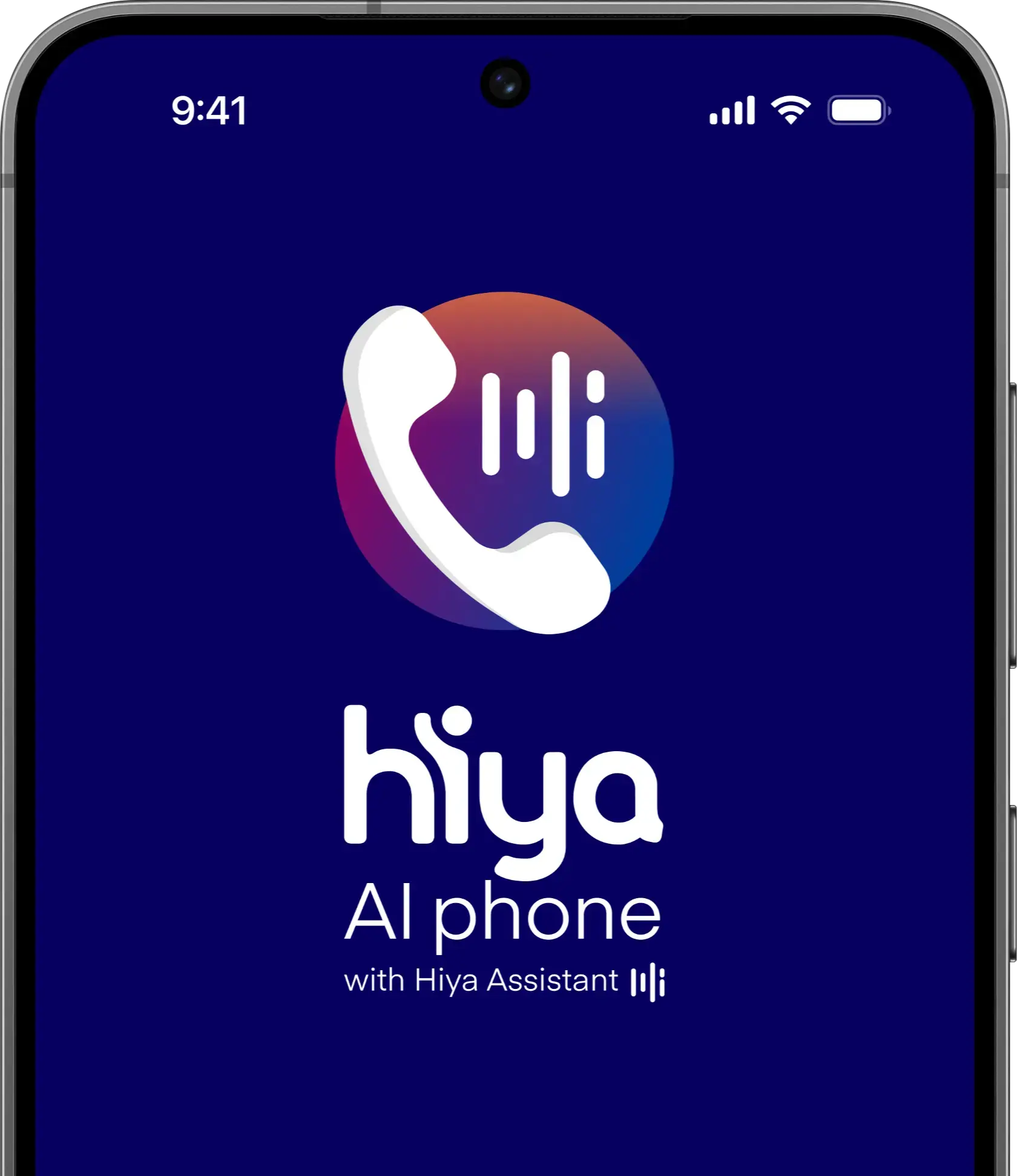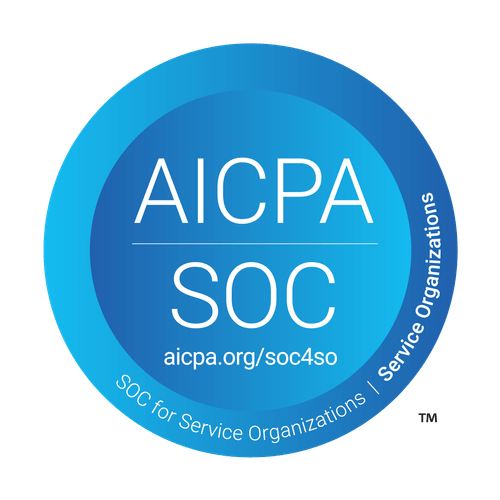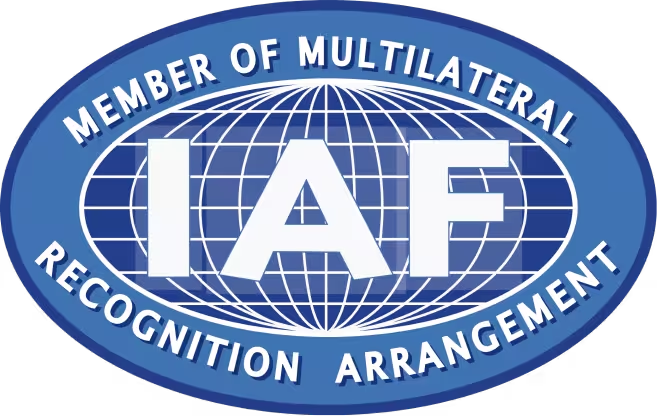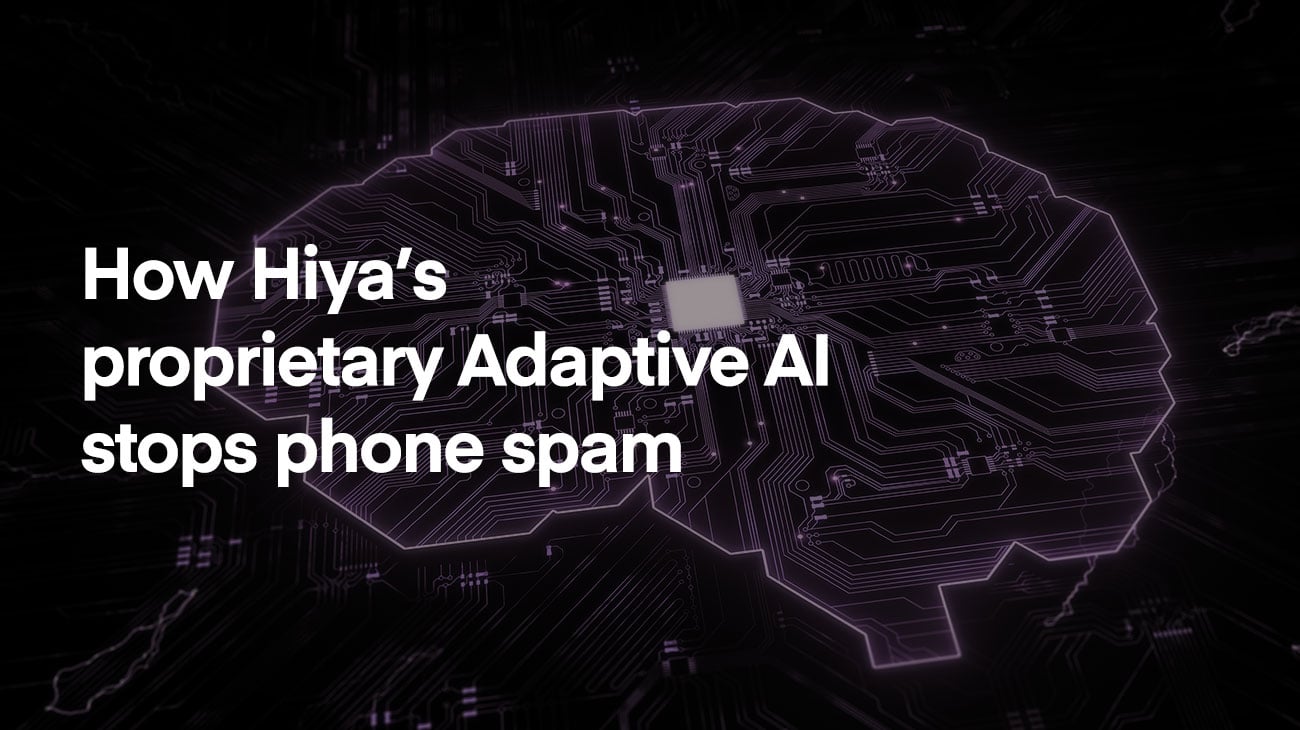
Today’s spammers and scammers are sophisticated and well organized. They use modern VoIP technology and take in billions of dollars from victims around the world. Rudimentary spam blocking technology is not enough to stop them.
That’s why Hiya Protect, Hiya’s voice security solution, uses the latest technology to fight against the global spam threat. At its core is Hiya’s proprietary Adaptive AI system.
What is Adaptive AI?
Adaptive AI is the industry’s only self-learning spam protection system. It uses past and present call patterns to respond to new threats as they emerge and apply the right protection to every call — all without any need for human retraining.
Adaptive AI combines a core set of number-based protections with three proprietary layers of protection: Spam Threat Scanning, Personal Call Filtering, and Enterprise Caller Scoring. Together, these layers look at every component of a phone call: the phone number used to make the call, the caller making the call, the recipient of the call, and the call itself. Let’s look at each of them.
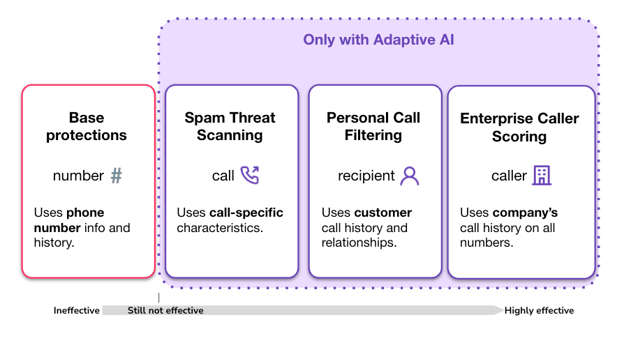
Hiya’s Adaptive AI technology analyzes every facet of a call — which includes Spam Threat Scanning, Personal Call Filtering, and Enterprise Caller Scoring — to provide the most complete and effective spam and fraud call protection available.
1. Base protections: Analyzing the phone number
The first layer of protection considers the characteristics and history of phone numbers making calls. This includes key compliance checks (such as number validity), characteristics of phone numbers (such as the type of line used), and trends in past calling behavior (such as call quantity and how calls are received by recipients). This layer provides the foundation of spam protection by understanding historical trends and characteristics that can indicate higher risk of spam from certain calling numbers.
Number-based protections are an essential requirement for fighting spam and fraud. Hiya not only starts with these protections, but delivers them in a more sophisticated system than any other solution. Hiya's base protections are a system of dozens of models that all work together in an adaptive way to ensure the right protection is applied to each call.
And — unlike other solutions — for Hiya these number-based protections are only the beginning and not the end.
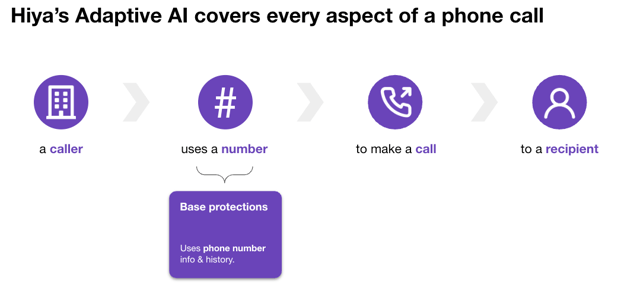
2. Spam Threat Scanning: Analyzing the call
Hiya’s Adaptive AI goes beyond the calling number to dissect aspects of the call itself.
Spam Threat Scanning uses the characteristics of a call observed in real time to determine each individual call’s unique risk of being spam — regardless of the calling number. It does this by continually observing the patterns left by spammers in network traffic to understand the current characteristics of the latest spam and fraud campaigns. This includes a wide range of signals such as where the call originated, STIR/SHAKEN attestation, the time and day of the call, and digit matching between the caller and recipient.
Spam and fraud are continually changing, but Spam Threat Scanning continuously learns and adapts to the latest spam and fraud campaigns as they emerge. It analyzes calls in real time to determine if they might be spam, even if the calling number has never made a spam call before.

3. Personal Call Filtering: Knowing the recipient
While some spam and fraud campaigns are indiscriminate, often phone spam is very personal. What is considered “spam” can also be subjective. For example, a call from an insurance company could be considered spam to one individual and an important call to someone else who is a client.
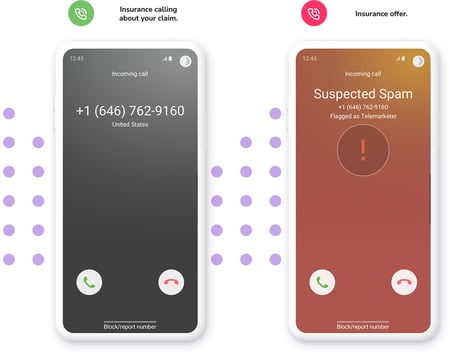
To address this, Hiya’s Adaptive AI system includes Personal Call Filtering, which uses past interaction history to understand which calls are important to individuals and protect them from targeted attacks.
Despite the prevalence of spam calls, about half of all calls today are built on a pre-existing relationship between the caller and recipient. Similar to an email spam filter, Personal Call Filtering is aware of relationships between the two parties of a call.
To protect against targeted attacks, Personal Call Filtering uses modeling to detect spam and fraud calls that target particular regions (such as impersonating a local power company) or particular demographics (such as seniors or other vulnerable populations) and provides appropriate protection for those audiences.

4. Enterprise Caller Scoring: Analyzing the caller
In addition to analyzing the phone number, the call, and the recipient, Adaptive AI considers the caller behind the call in order to apply the right protections to that call. Enterprise Caller Scoring considers not just the number calling, but the reputation of the calling organization. Similar to how credit agencies assess the creditworthiness of individuals across all their lending history, it evaluates the reputation of an enterprise across calls from all of their calling lines.
Enterprise Caller Scoring safeguards mobile subscribers from spammers who try to avoid detection by rotating phone numbers. Whenever a call is made, Enterprise Caller Scoring uses the calling number to look up the reputation of the calling business — even if that number has been recently rotated into use. It detects spammers no matter which number they use, and enables businesses to maintain and grow their reputations over time through disciplined calling practices, and benefit across all the numbers they own.

Hiya outperforms competitors
In the end, the value of any spam protection system lies in its effectiveness: how well it identifies spam — while at the same time not filtering out wanted calls.
Hiya Protect consistently shows the highest spam detection rates and best accuracy in the industry. Below are the results of a study of spam analysis across all of the three major US carriers. The results were compiled by the independent consulting firm, iBridge, LLC, and Hiya showed the highest detection rate and lowest error rate.
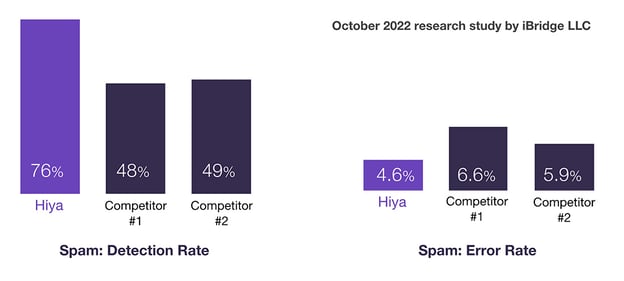
In a study of spam analysis across all of the three major US carriers, Hiya showed the highest detection rate and lowest error rate.
For more information on Hiya’s voice security solution, visit the Hiya Protect webpage or send us a message.




